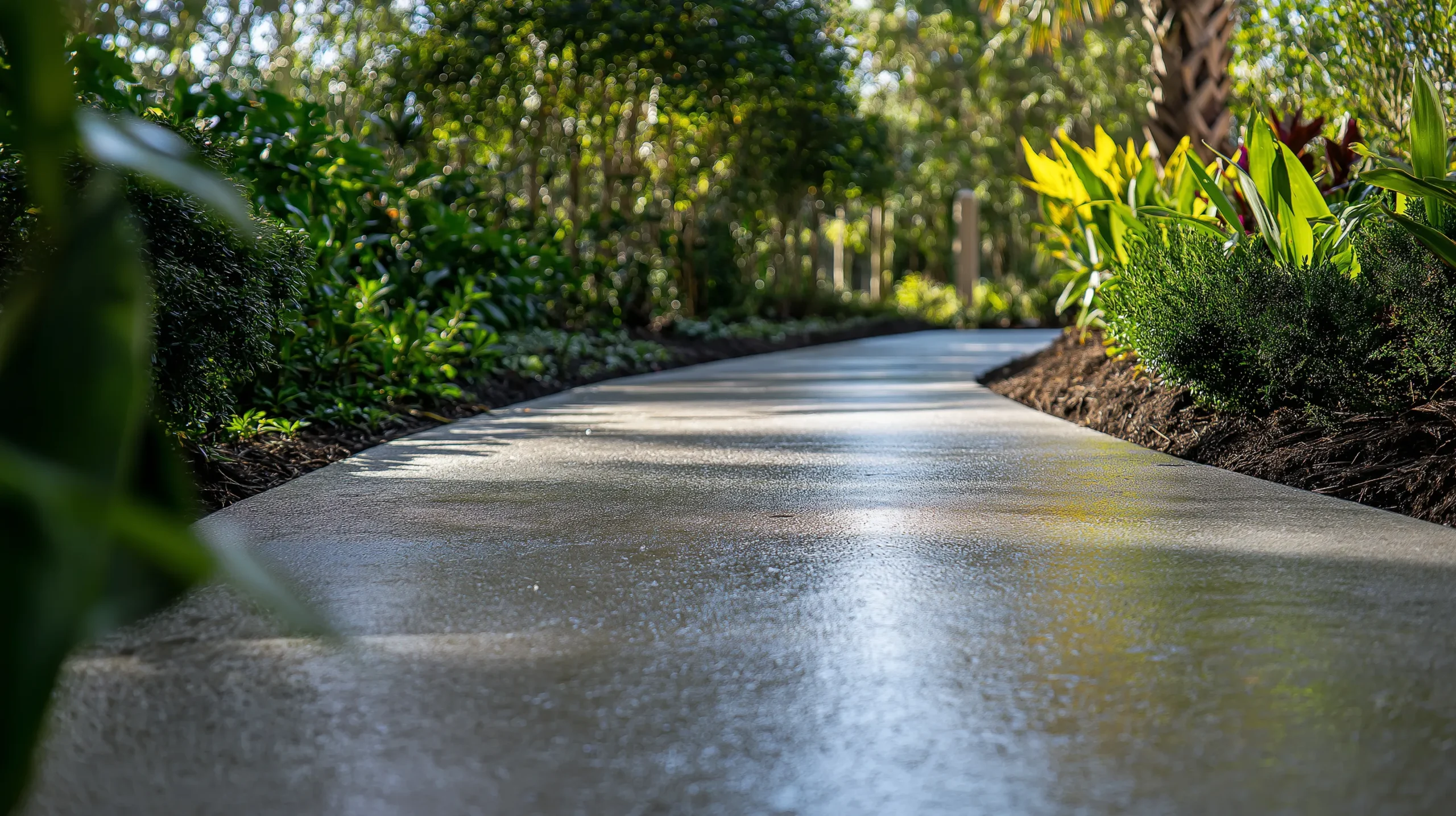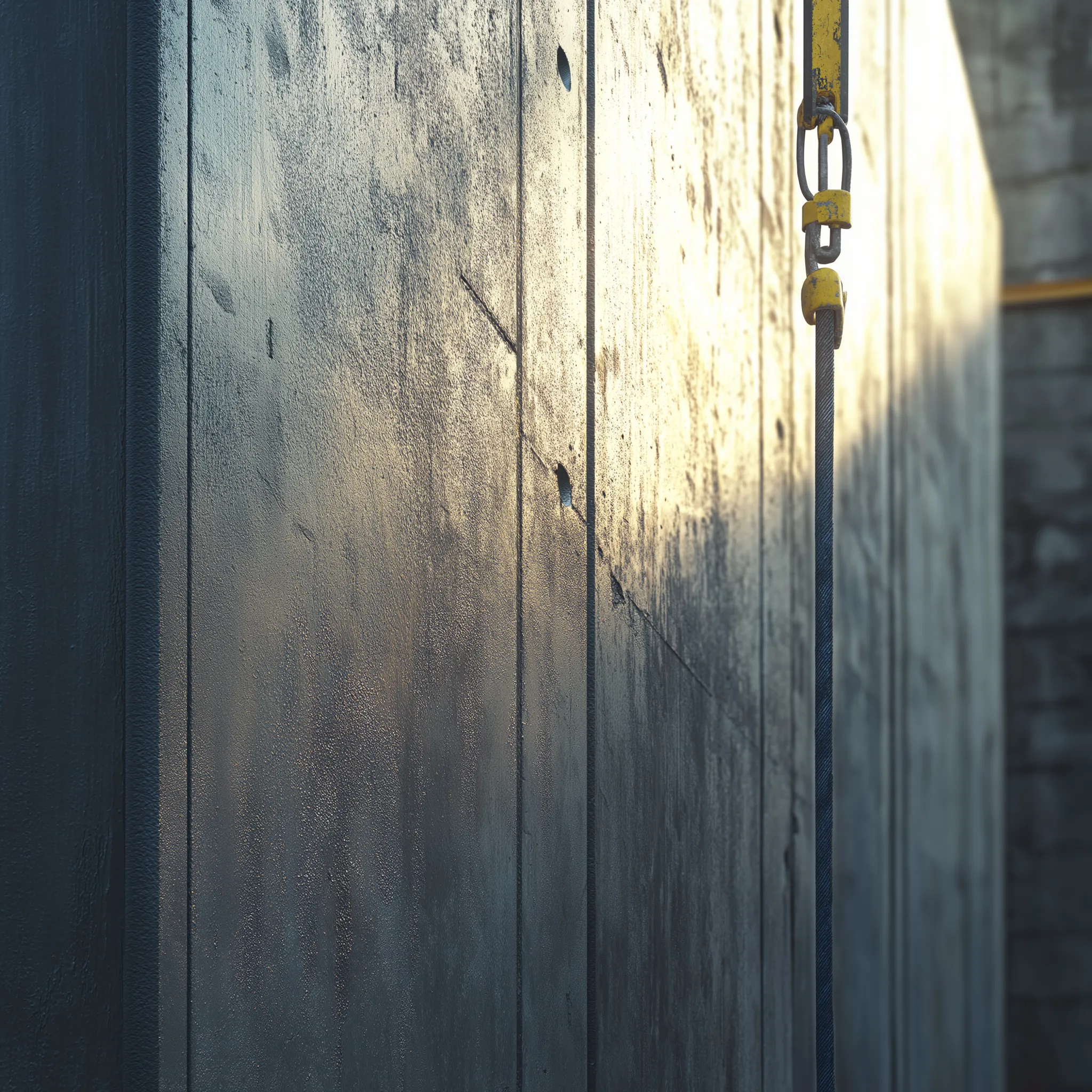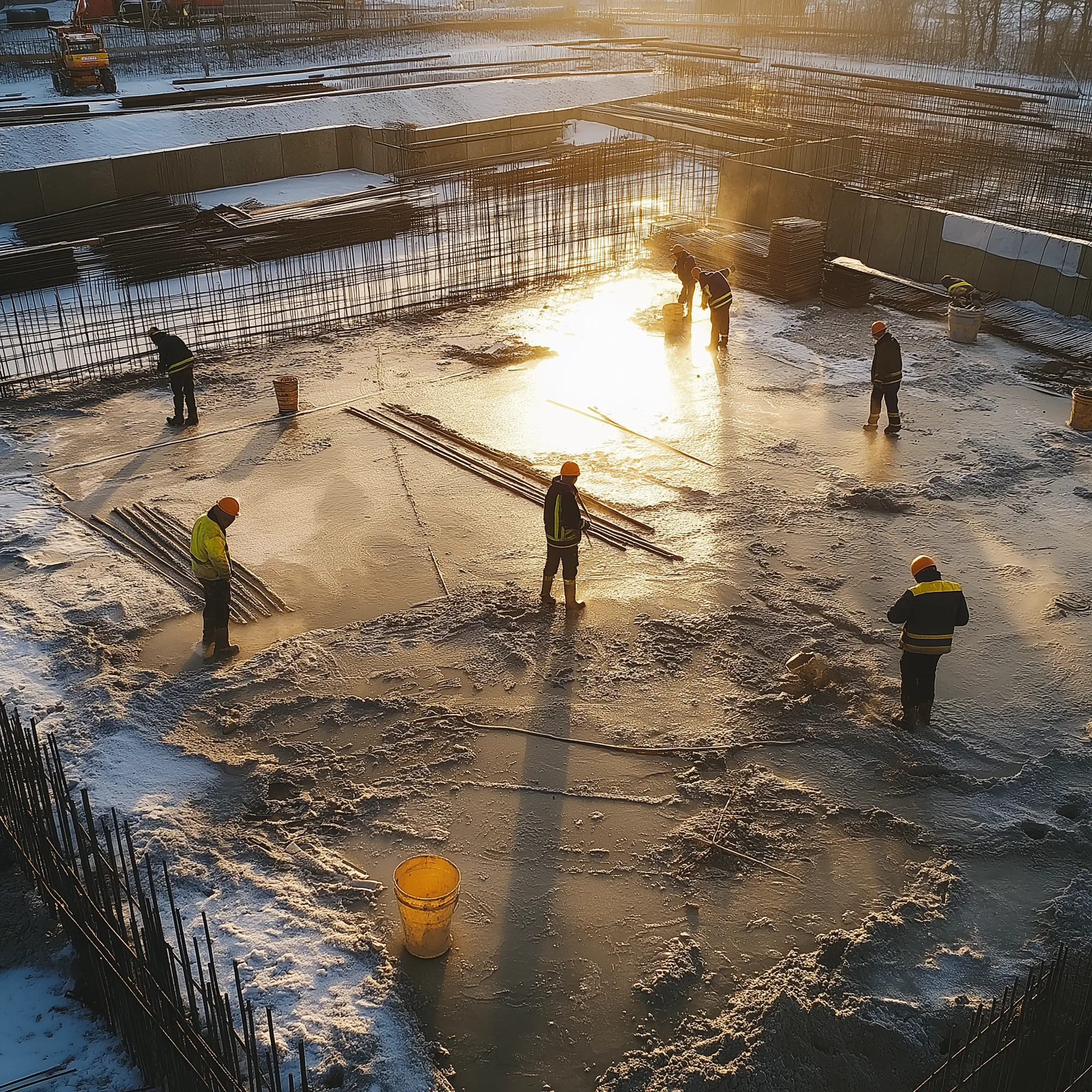Hot weather presents unique challenges in tilt-up construction, a method often chosen for its efficiency and cost-effectiveness. The combination of high temperatures and direct sunlight can lead to premature drying of the concrete casting slab, resulting in deficiencies such as cracking, crazing, and reduced surface strength. This article explores how to effectively use SpecChem’s bond breakers, including SpecTilt 100 and Clean Lift 20/20, to mitigate these issues, ensuring a smooth, professional finish on your tilt-up construction projects even in hot weather.
Understanding Hot Weather Challenges
Why is hot weather problematic for tilt-up construction?
Hot weather accelerates the evaporation of moisture from the concrete surface, which is crucial for proper curing. Without adequate moisture, the concrete slab can become overly porous and may not develop the intended strength and durability. This is where modified curing and bond breaker application techniques come into play, helping to ensure that the concrete maintains integrity and performance.
SpecChem’s Solutions: SpecTilt 100 and Clean Lift 20/20
SpecChem offers specialized bond breakers like SpecTilt 100 and Clean Lift 20/20, designed to address the challenges of hot weather in tilt-up construction.
SpecTilt 100
SpecTilt 100 is a reactive, solvent-based cure and bond breaker engineered for clean, easy lifts of tilt-up panels. It contains no diesel, kerosene, waxes, or silicones, which means it leaves no residue, stains, or discolorations on the panels.
- Cure Coat Application: Apply SpecTilt 100 immediately after final finishing and ideally before control joint cutting to the point of a uniform surface film accumulation. In hot weather, timing and application rate are crucial. The cure coat should be applied at 250-300 sq-ft per gallon.
- Bond Breaker Application: Before applying the bond breaker, saturate the casting slab surface with water, then remove excess water using a squeegee or compressed air. This step is particularly recommended if the slab was improperly cured or is suspected of being porous. Apply successive coats until the slab appears uniformly dark for a minimum of 2-4 hours and has a dry, soapy feel in all areas.
- Panel Concrete Placement: To minimize the “osmotic effect”—the migration of water from wet fresh concrete into the dry casting slab—ensure the slab is saturated with water and excess moisture is removed before placing the panel concrete.
Clean Lift 20/20
Clean Lift 20/20 is a water-based, chemically reactive cure and bond breaker that also meets the moisture retention requirements of ASTM C309.
- Cure Coat Application: Just like with SpecTilt 100, apply Clean Lift 20/20 immediately after final finishing and before control joint cutting. Ensure uniform surface film accumulation, especially on porous or rough finishes.
- Bond Breaker Application: Saturate the casting slab surface with water, thoroughly removing the excess before applying the bond breaker coats to cool the slab and mitigate porosity issues. Apply successive coats until the slab has a dry, soapy feel, ensuring no accumulation in low spots or depressions.
- Panel Concrete Placement: As with SpecTilt 100, ensure proper saturation and removal of excess water before placing the concrete panels to prevent water migration issues.
Best Practices for Hot Weather Application
How can you ensure proper application in hot weather?
- Timing: Apply the initial cure coat immediately after final troweling and before the concrete surface begins to lose moisture.
- Surface Preparation: Ensure the casting slab is clean and remove all dust, dirt, and contaminants before applying bond breakers. This is crucial for achieving a uniform and effective bond breaker layer.
- Moisture Control: In extremely hot weather, fogging the casting slab with water before deploying panels can enhance moisture retention and minimize potential surface defects.
Ensuring Success with SpecChem Bond Breakers
SpecChem’s bond breakers, including SpecTilt 100 and Clean Lift 20/20, are specifically engineered to handle the rigors of hot weather tilt-up construction, providing essential moisture retention and a clean, easy lift for concrete panels. By following the recommended application procedures and leveraging SpecChem’s innovative solutions, you can ensure your tilt-up projects maintain their structural integrity and aesthetic quality, even under challenging weather conditions.
Supplemental FAQ: Common Questions About Hot Weather Tilt-Up Construction and SpecChem Bond Breakers
1. What are bond breakers and why are they important in tilt-up construction?
Bond breakers are chemical agents used in concrete construction to prevent the bonding of concrete panels to the casting slab. This is crucial in tilt-up construction to ensure that panels can be lifted cleanly without damage or residue.
2. How does hot weather affect the performance of bond breakers?
Hot weather speeds up the evaporation of moisture, which can compromise the effectiveness of bond breakers. Proper application techniques, such as saturating the slab with water before applying bond breakers, can help mitigate these effects.
3. What steps should be taken if the concrete casting slab is overly porous?
If the slab is porous, saturate it with water prior to bond breaker application and use successive coats until the slab appears uniformly dark and has a dry, soapy feel. This helps in ensuring proper bonding and curing.
4. Can I apply bond breakers immediately after the concrete is poured?
Bond breakers should be applied immediately after final finishing and ideally before control joint cutting. This helps to form a uniform surface film, especially in hot weather conditions.
5. How can I ensure moisture retention in extremely hot weather?
In extremely hot weather, fogging the casting slab with water before applying bond breakers and deploying panels can enhance moisture retention. This prevents premature drying and potential surface defects in the concrete.
6. What is the “osmotic effect” and how can it be minimized during panel placement?
The “osmotic effect” refers to the migration of water from wet fresh concrete into the dry casting slab. To minimize this, ensure that the slab is adequately saturated with water and excess moisture is removed before placing the concrete panels.
7. Are there any specific ASTM standards that SpecChem bond breakers comply with?
Yes, Clean Lift 20/20 meets the moisture retention requirements of ASTM C309, ensuring it performs effectively under specified conditions.
8. What should I do if I notice staining or discoloration on the concrete panels?
SpecTilt 100 is designed to leave no residue, stains, or discolorations because it contains no diesel, kerosene, waxes, or silicones. Ensuring proper application techniques should prevent such issues.
9. How do I prepare the casting slab surface before applying bond breakers?
Ensure the casting slab is clean and free of dust, dirt, and contaminants. This preparation is crucial for achieving a uniform and effective bond breaker application.
10. Where can I find technical support or additional information on using SpecChem products?
For more detailed usage instructions or technical support, you can contact SpecChem’s technical service team. They can provide expert advice and guidance to ensure your project’s success.





